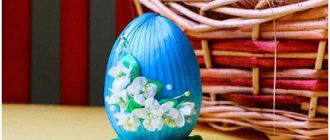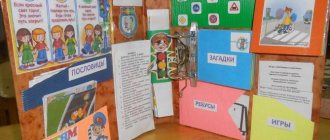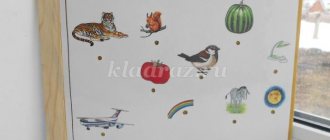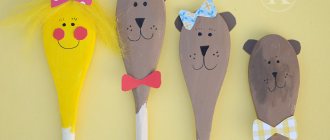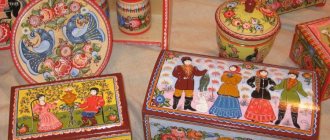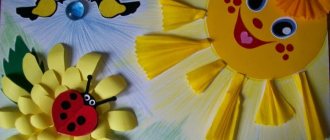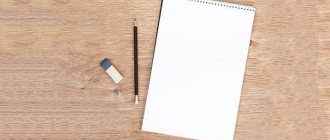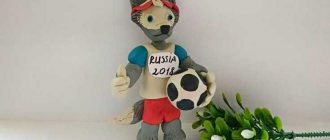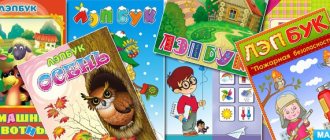Simple technique for beginners
This is a fairly simple drawing technique that even a preschool child can handle.
- In order to draw a hedgehog step by step, the young artist will need pencils and paper.
- Place the sheet of paper horizontally, and then from the center draw a zigzag line that runs along the entire body of the hedgehog.
Abstract of GCD on unconventional drawing “Hedgehogs”
Svetlana Zimareva
Abstract of GCD on unconventional drawing “Hedgehogs”
«Hedgehogs»
Unconventional technique : dry brush painting .
Goal: Continue to teach how to draw animals using the poking method with a hard brush, strengthen children’s ability to paint with a brush in different ways, develop imagination, fine motor skills, and cultivate the aesthetic perception of animals through their depiction in various artistic techniques.
Equipment: sheets with a drawn outline of a hedgehog , two brushes, semi-dry paint (black, paints for finishing details , oilcloth on the table.
Drawing the main elements
- Draw the hedgehog’s head, elongated, with a transition to an oval-shaped nose, and ears in the form of semicircles.
- Draw zigzags between the ears. A small arc is the mouth.
- Two ovals are eyes; inside them draw pea-shaped pupils.
- Now draw the lower needles and tummy. When drawing the belly, leave gaps for the legs. Draw the paws in the gaps.
- You can color your creation!
You can paint the body, legs and head of the hedgehog with a yellowish-orange color; give the nose and needles a dark gray color.
Hedgehog, step by step instructions
If you are wondering how to draw a hedgehog beautifully with a pencil, this technique of drawing this character in stages with a pencil will help you.
Take a landscape sheet and put a couple of dots on it, there should be about two centimeters between them. Draw the segment vertically.
Mark the middle and a little lower draw a line of the same length in the horizontal direction.
GCD for painting with a poke with a dry brush “Hedgehog Puffing at the Edge”
Irina Guseva
GCD for painting with a poke with a dry brush “Hedgehog Puffing at the Edge”
Artistic creativity of NOD “Non-traditional drawing : poke with a dry brush ” “ Hedgehog Puffing at the edge of the forest ”
Artistic creativity NOD “Non-traditional drawing : poke with a dry brush ” “ Hedgehog in the autumn forest ”
Artistic creativity of NOD “Non-traditional drawing : poke with a dry brush ” “ Hedgehog Puffing at the edge of the forest ”
. In the older group. Teacher Guseva I. N.
Goal: To help children learn a new way of depicting - poking with a hard, semi-dry brush .
1.Expand children’s knowledge about hedgehogs: appearance, habits, habitat.
2. Learn to draw with a poke using the “dry brush ”
,Advanced Features ;
strengthen children's ability to paint with a brush in different ways .
Image of painting details
- Complete this line with a rounded nose. Draw an oval from the nose, slightly lengthening it.
- Also draw two semi-ovals under it - one slightly smaller. This will be the mouth. Above the nose, draw oval-shaped eyes. The pupils will be round.
- From the mouth, draw the cheeks, which turn into semi-ovals above the eyes.
- Move on to drawing the needles. Start under the chin in a zigzag line, then trace it around the entire body of the hedgehog.
- Draw the front paws with toes, then the hind legs.
- Proceed to coloring your masterpiece.
Draw all the details with a black felt-tip pen, and also color the nose, the area of the mouth above the tongue, and draw the eyebrows. Once you have traced all the elements, erase the pencil lines with an eraser.
Hedgehog in pastels
Let's depict a pastel hedgehog in cartoon graphics, standing near a tree trunk in the fall:
- We draw the hedgehog's body in the form of a horizontally lying oval. On the side we draw a small vertical oval extending beyond the body. Draw a triangle with a curved apex to it.
- Draw a zigzag line over the back, turning into a smooth oblique line passing through the border of the abdomen.
- Take brown pastel. We draw the eyes and nose of the hedgehog in the form of two bold dots and four legs on the hedgehog’s stomach with pointed ends. At the edge of the oval, draw a semicircular ear with a fold inside.
- We outline the line of the abdomen with brown color and create a protrusion on the muzzle, indicating the chin of the animal. Use the same color to highlight the line from the nose and create an arched smile.
- Erase the extra pencil lines. We leave only the line of the forehead.
- Let's take a dark brown pastel. We draw needles with strokes all over the hedgehog’s back.
- Add light brown strokes. This will make the needle-like layer thicker and more natural.
- Paint the belly and muzzle with beige color.
- Under the hedgehog’s feet draw a layer of oblong-shaped leaves. For this we use green pastel. We create brown strokes on them.
- On the side of the leaf we depict a tree trunk using gray pastel. We draw the root system and create many lines on the bark to add texture. Shade the pastel with your finger.
The hedgehog is drawn. Dull pastel colors help convey the atmosphere of an autumn forest.
If you follow the instructions carefully, anyone can make a drawing without any artistic skills. Children will be delighted to be able to draw a hedgehog themselves.
Add color to your work
Take colored pencils.
- A light brown pencil is perfect for adding color to the face and paws.
- A gray pencil will be used for coloring the needles, and a blue pencil will be used for coloring the eyes.
- You can color your tongue red.
- To give the picture completeness, make a pattern of needles in the form of ticks.
If you wish, you can decorate the hedgehog with a butterfly or leaf, and complete the background.
Painting technique
And here are step-by-step instructions for children on how to beautifully draw a hedgehog using paints.
- To repeat this simple drawing technique, prepare brushes with paints and sheets of paper.
- First, dip your brush into white paint and start drawing a circle in the center of the sheet, and then color it.
- Extend it in front to create a nose. Wash off the remaining paint from the brush and paint black.
- We block her body without going into the nose area. Use the same paint to paint the needles.
- After you've washed your brush again, it's time to paint the face with brown paint and use the same color to paint the hedgehog's paws.
- Now you can decorate the hedgehog by painting an apple on the needles with brown and red paints.
- Now take a thinner brush to paint the details. Draw all the elements of the face - smile, eyes, nose.
- Draw the tail of the apple. Draw the needles better.
- Take green paint and paint an apple leaf and grass.
Drawing with paints
Paints are considered a more complex medium for drawing than pencils. A pencil mark can be erased with an eraser; nothing can correct a painted surface.
However, this is an interesting way of creating images on paper, which has a much wider range of possibilities in terms of technique and number of shades. There are many types of brushes for different types of painting.
Let's try to draw a hedgehog for children with paints:
- Place a sheet of paper horizontally and dip the brush into white paint.
- Draw a circle in the middle, completely filling its insides. This is the basis of the future drawing.
- On the side we draw an elongated pointed oval. This is the face of a hedgehog.
- We wait until the white background dries and you can paint on it with other colors.
- We put black paint on the brush, having previously washed it of white.
- We draw black needles on a single body. We draw lines in the opposite direction from the muzzle, shading the entire surface with them. A wide brush is suitable for this.
- Dip the brush into brown paint, washing it off before doing so.
- We draw the muzzle and paws located under the body.
- Take a thin brush and pick up some black paint.
- We depict needles, draw eyes and a nose on the muzzle.
To give the image some life, you can put an apple on the hedgehog’s needle-like back. On the ground we draw grass, mushrooms and other possible details.
Let's depict a hedgehog with an acorn in his hands. For the painting you will need gouache paints, various brushes, a palette, a container of water, scissors:
- We denote the boundaries of the picture with two lines, upper and lower.
- Just below the upper border we draw two arcs and continue them down, slightly narrowing them.
- From below we draw rounded paws, continuing the lines.
- Draw a nose. Draw an inverted triangle on top. Above it we draw a small soul. From the lower apex of the triangular nose we draw two curved lines. Between them we draw two arcs, indicating the mouth.
- On both sides of the nose we draw two round eyes. Above them we draw eyebrows in the form of two oblique ovals. We add curved triangular eyelashes to them.
- We outline the hedgehog with an arc passing through the top line. Make the line zigzag. We erase the excess pencil mark.
- Draw the front paws. Between the bottom ones we draw a line connecting them. Draw the stomach in the form of an arc.
- On the head we draw a hat in the form of the top of an acorn.
- Mix white paint and ocher on the palette. Paint the body this color using a wide brush. We make the needles brown.
- We leave the oval next to the lower paws and the muzzle white.
- Add more white to the ocher. Paint the belly with this color.
- We outline the outline of the hedgehog's body and mouth with black, paint over the nose and eyes.
- We paint the cap with ocher. We draw a lot of vertical strokes on it.
- We take lightened ocher and make strokes on the hedgehog’s needle-like coat. We draw them from the center to the edges.
- Create highlights on the eyes and nose.
- On a separate sheet we draw an acorn. We draw the lower part in the form of a pointed oval, the upper part in the form of a semicircle, from which the stalk extends.
- We paint the lower part with dark brown, the upper part in the same way as the hedgehog’s hat.
- Cut out the acorn. We glue it between the animal’s paws.
The drawing is completed, the hedgehog is drawn. Most of all, he resembles a cartoon character.
Hedgehog from your favorite cartoon
Surely your child likes the animated series “Smeshariki”. Then he will be delighted with the idea of drawing one of the characters from this cartoon - the Hedgehog.
You will learn how easy it is to draw such a picture by following the step-by-step instructions.
- Prepare a landscape sheet, markers of different colors and a simple pencil. Draw a circle in the center of the sheet.
- Divide the resulting circle into four equal parts, first drawing a vertical line, then a horizontal one.
- In those areas where the lines and the circle touch, draw inclined segments. In the center from the point of intersection of the lines, draw upward oblique lines.
- Step back a little from the top of the circle and, focusing on the vertical line, draw the forehead.
- Draw your eyebrows a little lower; they are rectangular in shape and slightly inclined.
- Draw the eyes, they should be large, around them draw glasses in the form of circles, inside the eyes add pupils and highlights.
- Complete the glasses by drawing the arms.
- It is better to depict the nose and mouth in a triangular shape.
Pencil drawing of a hedgehog
Let's draw a hedgehog in profile step by step. To draw you will need a sheet of paper, a pencil, an eraser:
- Take a landscape sheet and lay it horizontally. On the left and right sides of the sheet we place dots marking the middle of the side. These are the dimensions of the animal's body, showing its width. From the top of the sheet we place another point, at the height of which the animal’s back will be located. The result is a triangle.
- We begin to draw a broken line with small links, starting it between the left and top points and ending at the right. This is the needle-like covering of the animal's body.
- Draw the face of a hedgehog. We depict it in the form of an elongated oval, ending at the left point. We draw two small oval ears near the end of the zigzag, and between them we also draw needles.
- Let's detail the muzzle. We draw a smile in the form of an arc, two small round eyes in which we mark the pupils. We complement the row of needles by drawing a zigzag next to the ears and near the extreme part of the leaf.
- Draw the belly of a hedgehog. We draw an arc, starting from the middle of the muzzle and leading to the edge of the needles. At the same time, we leave space for the paws, which we draw on the left and right sides of the arc, two pieces at a time.
A drawn hedgehog looks from the picture at the artist. Now you can color it. We paint the needles dark brown, the paws, muzzle and belly beige, the eyes, mouth and nose black.
Let's draw another hedgehog with a pencil.
This work has more small details and a more complex construction. The drawing turns out to be more elaborate.
Any child of primary school age can cope with drawing, especially if he is helped by an adult:
- In the center of the sheet we outline the boundaries of the hedgehog’s face. Draw two points at a distance of 2 cm, top and bottom.
- Draw a line between two points.
- Place a mark just below the middle of the segment and draw a horizontal segment through it. Its length should be equal to the distance between the mark and the top point.
- At the edge of the horizontal line, draw a circle that will represent the hedgehog’s nose.
- We outline the nose with an oval edging. The left side should be placed under the circle, the right side should be left uncovered.
- Below it we draw the hedgehog’s mouth in the form of two semi-ovals.
- Right above the nose we draw the eyes of the hedgehog. We draw one oval in the area of the muzzle, and another - slightly going beyond the contour. We draw two circles in them to depict the pupils.
- We draw the cheeks, depicting them in the form of a line leading from the bottom of the mouth to the side and to the eyes. Draw semi-ovals above the eyes.
- We begin to draw a broken line at the edges of the muzzle and continue it along the entire length of the body. Draw the paws under the needle layer.
- We outline the outline with a black felt-tip pen and draw eyebrows. Paint over the nose, mouth and pupils with black. We make the body and legs brown, the needles gray, and shade them. We give the eyes a blue color, and the line of the mouth is made red.
You can add background details to the finished drawing - for example, blades of grass, butterflies or mushrooms.
Let's depict a hedgehog carrying an apple on its needles:
- We draw a horizontal wide oval, indicating the torso.
- At the top we draw a circle from which we will make an apple.
- We make a rounded notch on the left side of the oval, lengthen it and bend it from the bottom. At the end we draw a small oval nose.
- We draw a stalk on the apple, add a leaf to it, and make veins on it. Give the apple a more natural shape by making an indentation on the top.
- We make the contour clearer by increasing the pressure of the pencil. We create a needle-like layer around the body by drawing a zigzag line with links of different lengths. A triangular muzzle should look out of it.
- Draw the eye in the form of a small circle. Inside we make a black pupil with a small white highlight. Paint over the nose with black, leaving a small white spot.
- Paint the apple yellow. We outline the outline with pink. We make pink strokes on top of the yellow surface.
- Shade the area of the leaf with a light green pencil. We paint the top half dark green, and outline the bottom half with the same color.
- Color the hedgehog needles light brown. We use strokes in several rows, from outer to inner.
- We make several zigzags with black lines on a light brown background, highlighting individual needles on the hedgehog’s body.
Drawing of a hedgehog with an apple on its back. This is a classic image of a hedgehog from children's fairy tales.
Drawing needles
Above your head, start drawing a triangle, but do not extend it to a circle. Draw a line to the right of the intersection of the inclined line and the edge of the circle, then connect it to the next inclined line.
On the left, repeat the same thing, so you get the “needles” of a hedgehog. In the gaps formed between the needles, put a mark and, focusing on it, add another needle on each side.
On the topic: methodological developments, presentations and notes
Subject. Sound U. Purpose. Strengthen the skills of clear pronunciation of sound. Educational objectives: 1. Introduce children to sound.
Lesson notes in mathematicsLesson notes in mathematics in the middle group Topic: Plan (travel map) Program objectives: Develop the ability to navigate according to an elementary plan, correctly.
Lesson notesClasses on speech developmentLessons of the final lesson on speech development “Visiting grandma.”
Date: February 21, 2012 Participants: children of the preparatory group Conducted by: educational psychologist Panova M.M. Purpose: to promote formation.
Introduce children to number and figure 6. Improve counting skills and comparison of subject aggregates. Form children’s ability to distinguish between the concepts of yesterday, today, tomorrow. Consolidate knowledge about geome.
Lesson summary “Travel to Africa. How to help a boa constrictor?” Program content: 1. Educational: learn to use a conventional measure when determining the size of objects.
1. The surrounding world Topic: Winter sports. 2. mathematics Schitariki-Smeshariki. topic: counting from 1 to 53. speech development, conversation with a puppet theater based on the fairy tale Rukavichka.4. drawing theme: Winter.
Source
Adding details
- Under the body, draw pear-shaped legs. Draw oval handles on the sides.
- Now take a black felt-tip pen and trace all the details of the image.
- Erase the pencil sketch and start converting the image to color.
- A black felt-tip pen is perfect for coloring in part of the pupils.
- A purple pencil or felt-tip pen will be needed to color the needles.
- The mouth and glasses will be blue.
- You can color the Hedgehog's eyebrows and nose with a brown felt-tip pen.
- Red pencil or felt-tip pen for coloring the character’s torso, arms and legs.
- Apply an additional layer to the legs and lower body. Smesharik is ready! You can put it in a frame.
There are many ways to draw a hedgehog, and you can use a wide variety of materials - paints, pencils and felt-tip pens, and also choose a technique that is appropriate for any age, both for preschool children, schoolchildren, and adults.
Photos of hedgehog drawings
0
